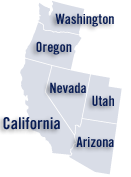Fulfillment shippers face many diverse challenges as they manage outbound shipping for multiple, unrelated clients. So, having a flexible, rules-based shipping system (which can be quickly and easily configured to accommodate ever changing business rules) is mission critical.
While a complete list of possible, client-specific requirements would be endless, here is a short list of specific examples to consider before discussing how to solve these types of challenges:
 For some clients use your own prepaid carrier accounts, but for other clients, use the clients' prepaid UPS and/or FedEx account #s.
For some clients use your own prepaid carrier accounts, but for other clients, use the clients' prepaid UPS and/or FedEx account #s.- For one client, all shipments need to be Signature Required
- For one client, all shipments need to be insured for 80% of the order value over $300.
- For one client, choose the cheaper method between UPS Ground Residential and Priority Mail.
- For one client, bill all FedEx shipments third-party to client's FedEx account.
- Print the Client's Order # and PO # on the label for one client and print just the Client's Order # for all other clients.
- For one client, upload two special billing references fields to UPS and FedEx.
- For some clients, print the client's name and address as the (ship from) return address. For other clients, print your name and address. For a third group of clients, print just the client's name but your return address.
Do these sound familiar? Well, as you know, the list goes on and on. In many cases, there are multiple business rules for each client and they may change over time. The rules and changes to them may be taken care of by manual procedures or they may be handled automatically by configuring business rules in a shipping system.
It is difficult to expect shipping system operators to remember a variety of rules especially when they are subject to change. Mistakes are very likely to happen which can be costly, eat into your profit margins and potentially cost you your client's business. The cost of training, re-training and supervision can be considerable too.
A better alternative is to implement a rules-based shipping system. With a rules-based, multi-carrier shipping system, implementing rules such as the examples above is not much more difficult than defining the rules in plain English. It is often done by simply creating a text file containing the rules that is then accessed by the Shipping System.
Using Scripts to Handle Business Rules
In an ideal shipping system, these rules are written in a user-friendly, non-proprietary language-- such as vbScript. If you have an IT staff or are willing to roll up your sleeves, you can create and maintain the rules on your own and on the fly. Otherwise, you may outsource the script-writing to the shipping system vendor or to a programmer.
Here are two examples of how simple the syntax is for a couple common business rules:
Rule #1
Plain English
For client ABC, activate Signature Required for all of their UPS shipments.
Corresponding Script
If Client="ABC" And Carrier="UPS" Then ShipSetField("PODService","DCS")
NOTE: A shipping system installer will typically create these business rules, but the scripting is something that can be accomplished by an end-user or a third-party. In some cases shipping system specific syntax like ShipSetField ({Field Name}, {Field Value}) needs to be learned, but these are typically simple and well documented.
Rule #2
Plain English
For client A, use UPS Account # 111111
For client B, use UPS Account # 222222
For client C, use UPS Account # 333333
For All other clients, use Prepaid House Account
Corresponding Script
Select Case Client
Case A
ShipSetField("BillShipNo","111111")
Case B
ShipSetField("BillShipNo","222222")
Case C
ShipSetField ("BillShipNo","333333")
Case Else
'Comment: default to prepaid house account
End Select
As you can see, implementation of a rules-based system is simple, straight-forward, and is more practical, in many cases, than managing business rules with manual procedures. It can eliminate a lot of time, effort and costly mistakes. If your system is not currently capable of handling scripts, it may make sense to consider an upgrade.

 Many shippers cannot be bothered to take advantage of this easy, cost saving step. The typical excuse is that it's too difficult and too time consuming to justify the effort. The truth is that it does not take very many "local" express shipments to make it worth your while. So, here's how to estimate your potential savings and how you can start benefiting from this idea immediately.
Many shippers cannot be bothered to take advantage of this easy, cost saving step. The typical excuse is that it's too difficult and too time consuming to justify the effort. The truth is that it does not take very many "local" express shipments to make it worth your while. So, here's how to estimate your potential savings and how you can start benefiting from this idea immediately. Expanded Next Day Ground Delivery Area: Regional carriers typically offer significantly expanded next day ground delivery areas. So, more of your customers can benefit from next day deliveries at ground delivery pricing.
Expanded Next Day Ground Delivery Area: Regional carriers typically offer significantly expanded next day ground delivery areas. So, more of your customers can benefit from next day deliveries at ground delivery pricing. Third-party shipping systems can automatically determine the best method for shipping domestic and international small parcel and LTL shipments. When the best method is based on rate only, the comparisons should include all applicable parameters such as package dimensions, residential fees, delivery area and fuel surcharges, discounts, customer preference, transit times and more.
Third-party shipping systems can automatically determine the best method for shipping domestic and international small parcel and LTL shipments. When the best method is based on rate only, the comparisons should include all applicable parameters such as package dimensions, residential fees, delivery area and fuel surcharges, discounts, customer preference, transit times and more.